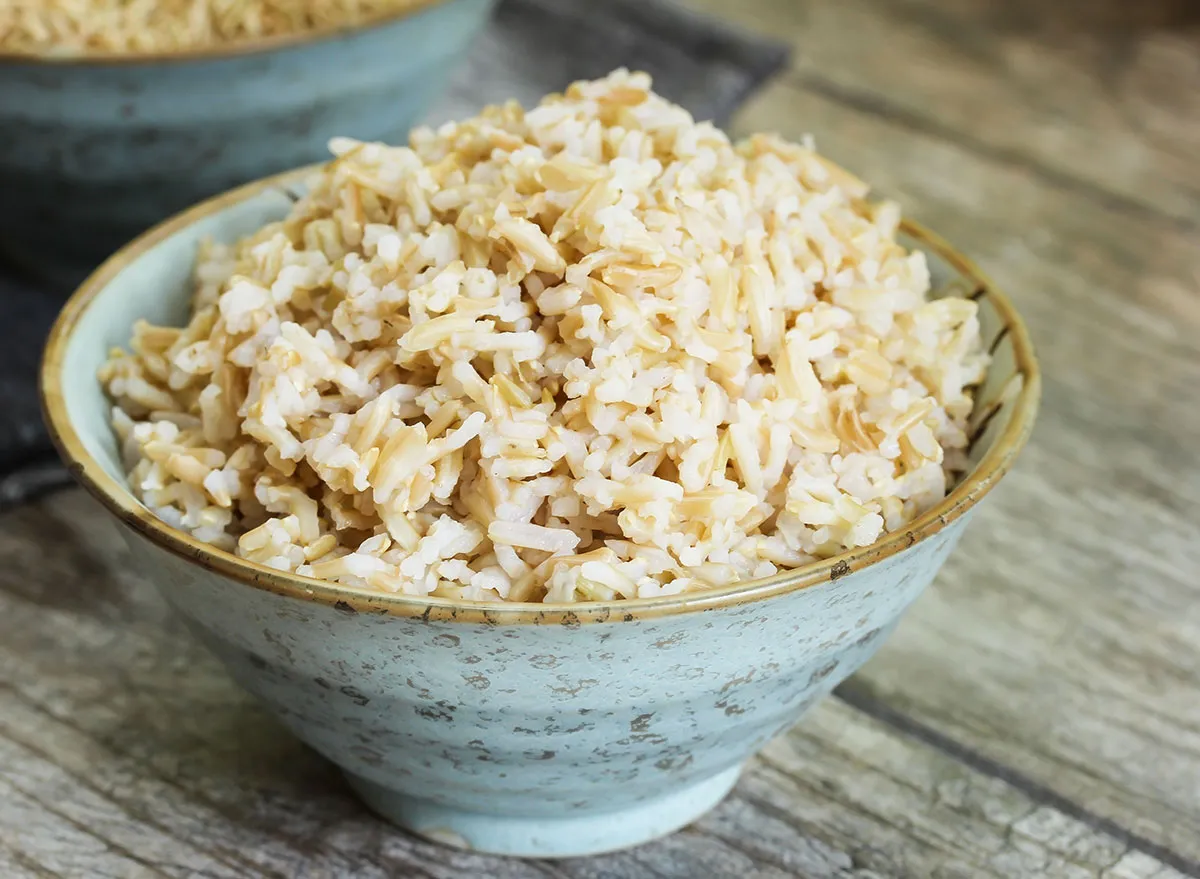Brown Rice? Stay Away!
 |
| Brown rice. Many people think that if they give a bit of taste and Sofer texture they will be eating healthier with brown rice.The medical Board of “Eat this Not That” has a surprise for you. |
You can't really talk about brown rice without also delving into white rice. The main difference between the two? White rice has been refined to remove the beneficial bran and germ; brown rice is categorized as a healthier whole grain because the bran (a form of dietary fiber) and germ are intact.
"Whole grain, brown rice provides more essential nutrients compared to white rice, including magnesium, iron, fiber, b-vitamins, and antioxidants," says Lisa Moskovitz, RD, CEO of NY Nutrition, and a member of our medical expert board.
00:09 / 01:01
Studies have shown that substituting whole grains, such as brown rice for white rice, reduces the risk of Type 2 diabetes.
Although brown rice is, for the most part, nutritious. It is also associated with some undesirable effects you might not be aware of. Here's what you need to know, and for even more healthy eating tips, be sure to check out our list of The 7 Healthiest Foods to Eat Right Now.
1. It may have traces of arsenic.
"Brown rice may be higher in a toxic chemical called arsenic that is linked to cancers, heart disease, and diabetes," says Moskovitz. "It is naturally present in our environment, but can be concentrated more in certain foods such as rice or rice products."
Unlike other food crops, rice accumulates arsenic in concentrations that are ten times higher than other grains. Interesting fact: Whereas arsenic is distributed throughout the grain for white rice, brown rice tends to have arsenic at the surface of the grain. A study that compared the amount of arsenic in rice showed that brown rice had more inorganic arsenic than white rice.
According to Melissa Mitri, MS, RD rinsing rice with plenty of water just before cooking helps to reduce the amount of arsenic.
However, "recent research has shown that this method is more effective in white rice than brown," says Lauren Panoff, MPH, RD.
While you would have to consume rice in high amounts in order for this to have a major impact on your health, it is good to still be aware of it when consuming this grain.
What Happens To Your Body When You Eat Rice
2. You may experience digestive problems.
"Since brown rice contains more fiber, it may cause digestive upset such as bloating and diarrhea in those who are sensitive to fiber," warns Mitri.
Moskovitz agrees. "Brown rice is a grain that some people don't tolerate well. If you have a sensitive digestive tract, and especially if you struggle with constipation, rice can be binding. For that reason, it is good to vary up the types of foods and starches you prepare," she says.
Here's One Major Effect of Eating Fiber-Rich Foods, Says Expert.
3. Your body will consume anti-nutrients.
"What is perhaps not as well-known is that brown rice contains compounds called antinutrients, which can reduce the absorption of the nutrients in that food," says Mitri. "Brown rice is higher in phytic acid, which can bind to and reduce the absorption of minerals such as zinc, calcium, and iron," adds Panoff.
4. Your blood sugar will elevate.
"Brown rice is still a starch," says Moskovitz. "For those who are carb-conscious or must-watch blood sugar levels, whether you're eating white or brown rice, portions will matter. One cup of cooked brown rice has about the same amount of carbs as one cup of cooked white rice."
The bottom line: "You don't need to be afraid or avoid rice, but it is still recommended to rotate rice with other types of grains," says Moskovitz. Mitri further adds that consuming rice in moderation and rinsing it before cooking will limit these side effects. Furthermore, the benefits of brown rice outweigh these side effects.
BY
Comments